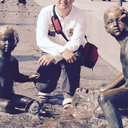Involvement of TLR2 and TLR9 in the anti-inflammatory effects of chlorogenic acid in HSV-1-infected microglia.
키워드
요약
OBJECTIVE
There is no effective medication to date for herpes simplex virus encephalitis (HSE). In this study, we investigated the anti-inflammatory effect of chlorogenic acid (CGA) on herpes simplex virus (HSV)-1-induced responses in BV2 microglia.
METHODS
The cellular model was established with BV2 cells stimulated by HSV-1 and then treated with CGA at different concentrations. Cell viability was assayed by the MTT assay. The mRNA expression of Toll-like receptor (TLR)-2, TLR9 and myeloid differentiation factor88 (Myd88) was assayed by real-time quantitative PCR, and the protein expression was assayed by flow cytometry or Western blotting. Tumor necrosis factor-α (TNF-α) and interleukin (IL)-6 were measured by ELISA as well as real-time quantitative PCR. Nuclear NF-κB p65 protein was assayed by Western blotting.
RESULTS
The cell survival rate was significantly improved after CGA treatment, and CGA prevented increases in TLR2, TLR9 and Myd88 following HSV-1 challenge in BV2 cells both at the mRNA and protein levels. Moreover, CGA could attenuate HSV-induced TNF-α and IL-6 release into the supernatant. The mRNA levels of TNF-α and IL-6 were also significantly inhibited by CGA. The expression of NF-κB p65 increased significantly in the nucleus in HSV-1-stimulated microglia but could be reduced by CGA.
CONCLUSIONS
CGA inhibits the inflammatory reaction in HSE via the suppression of TLR2/TLR9-Myd88 signaling pathways. CGA may serve as an anti-inflammatory agent and provide a new strategy for treating HSE.





